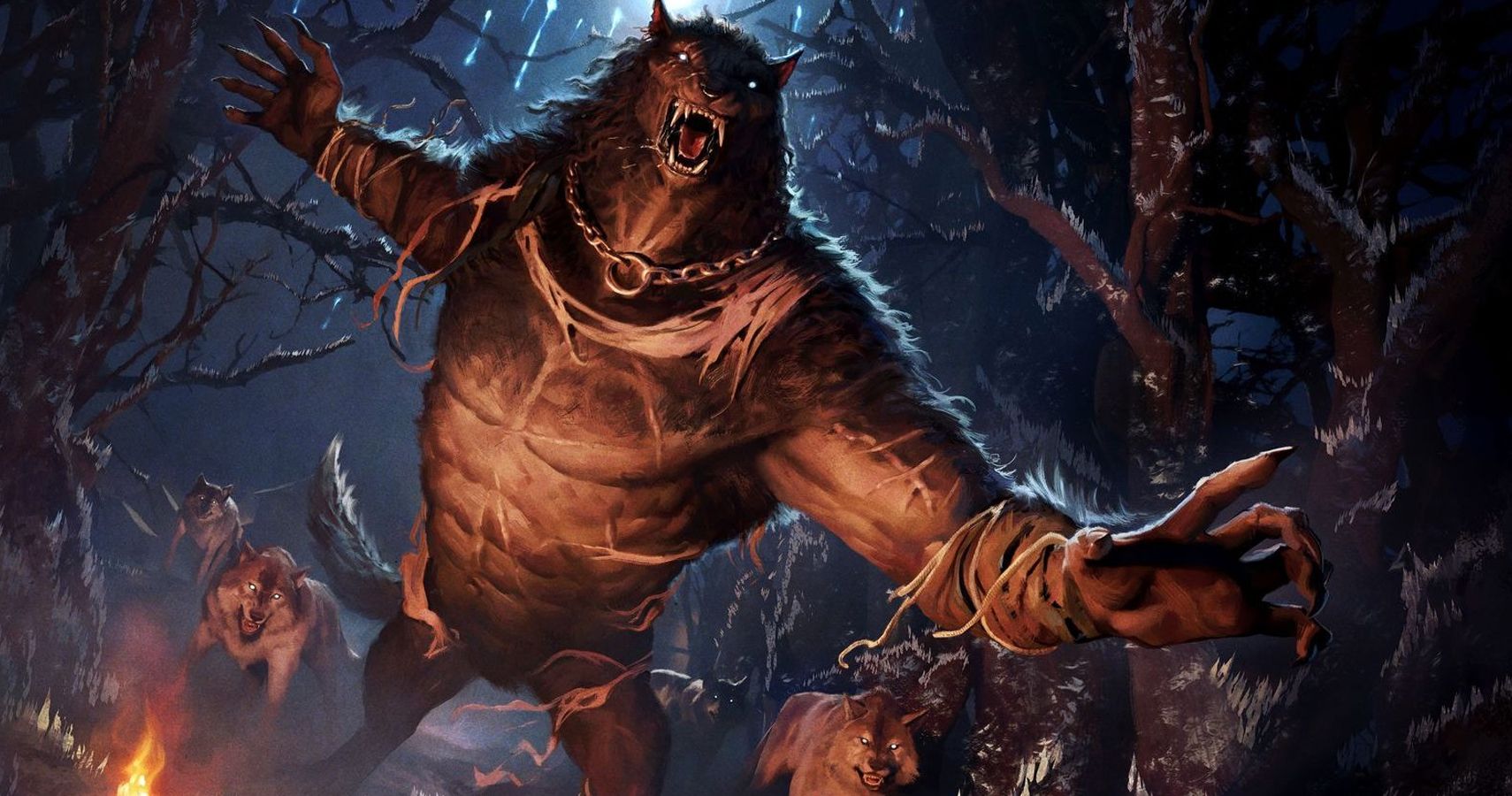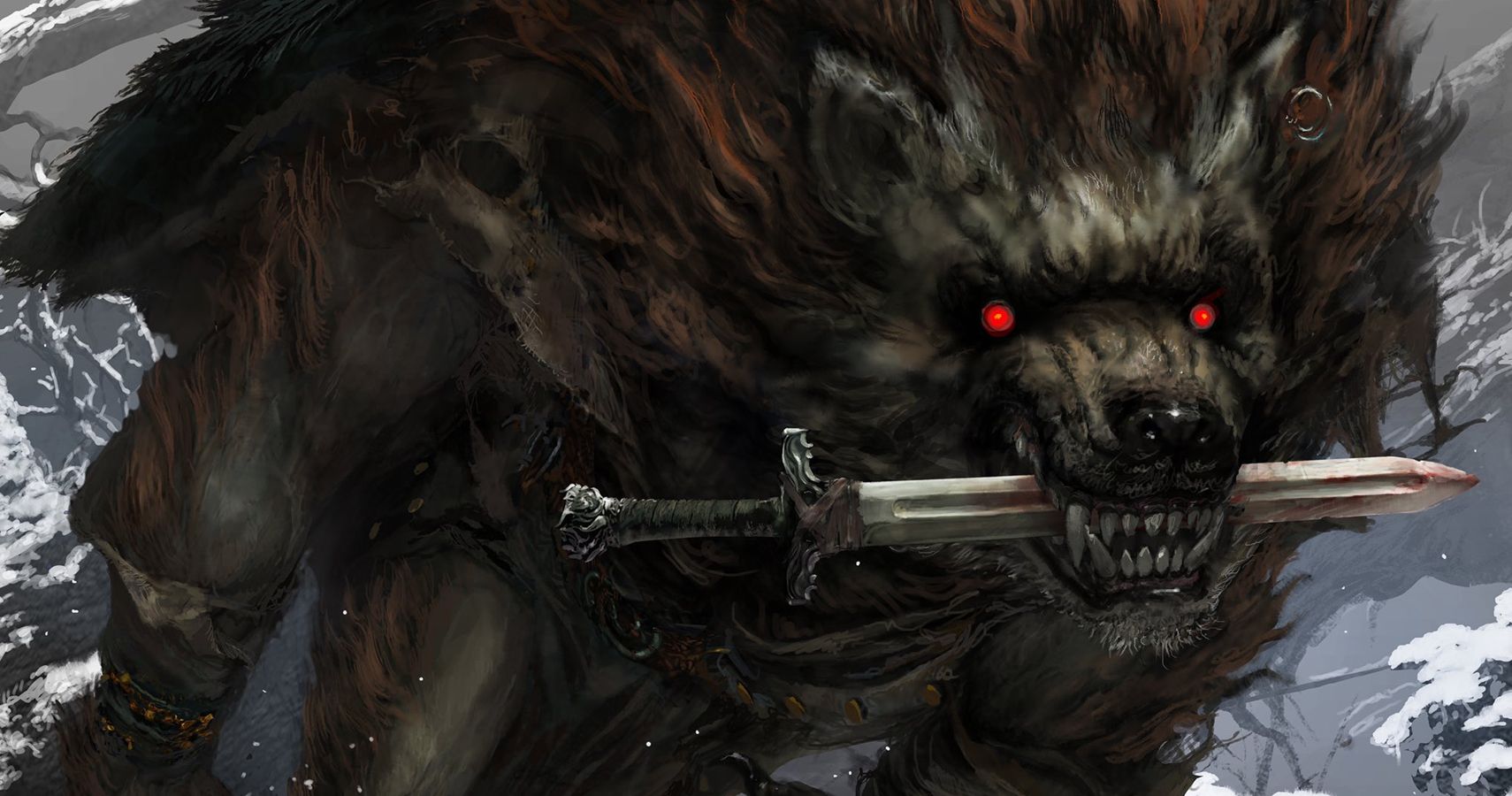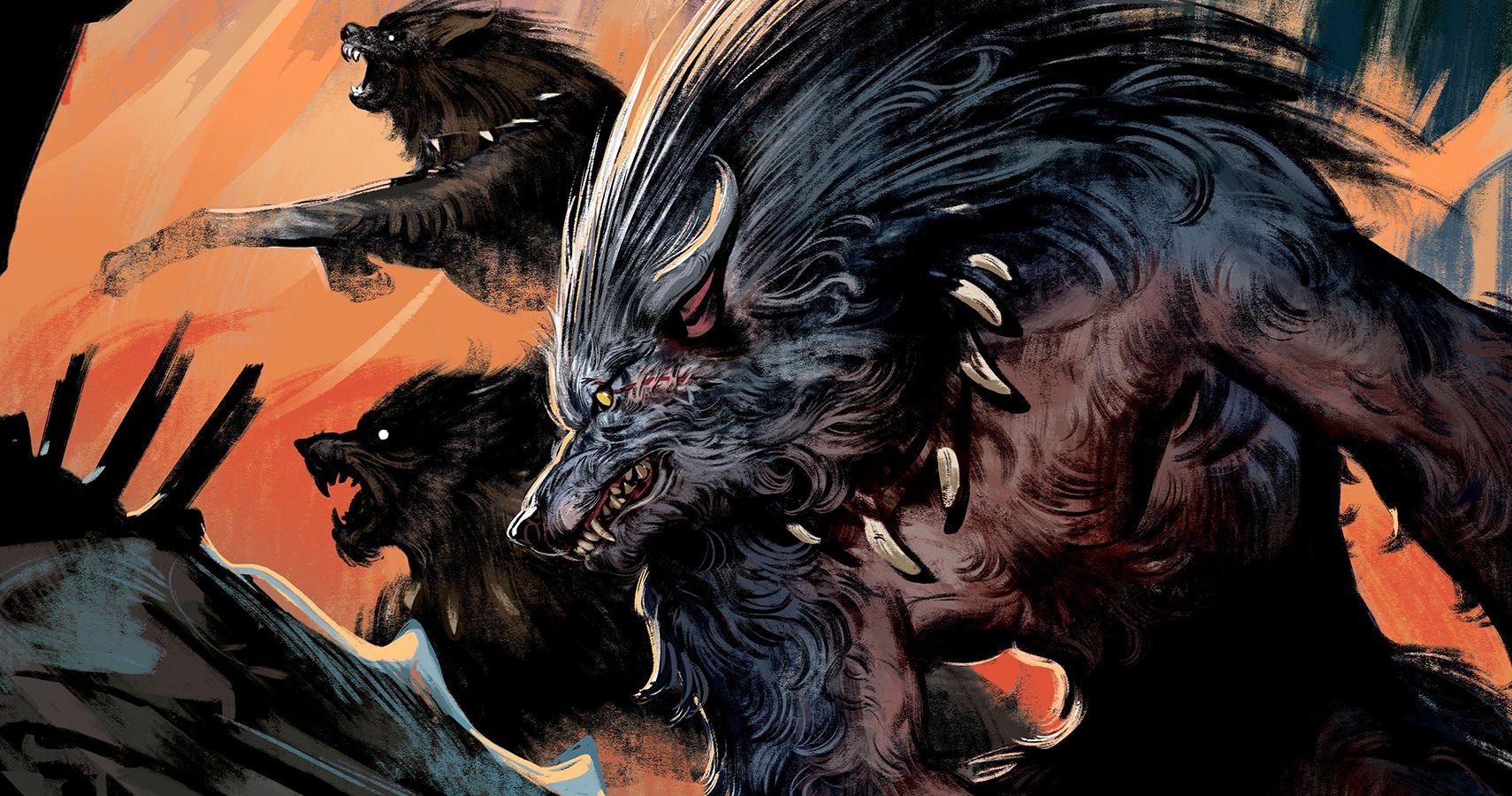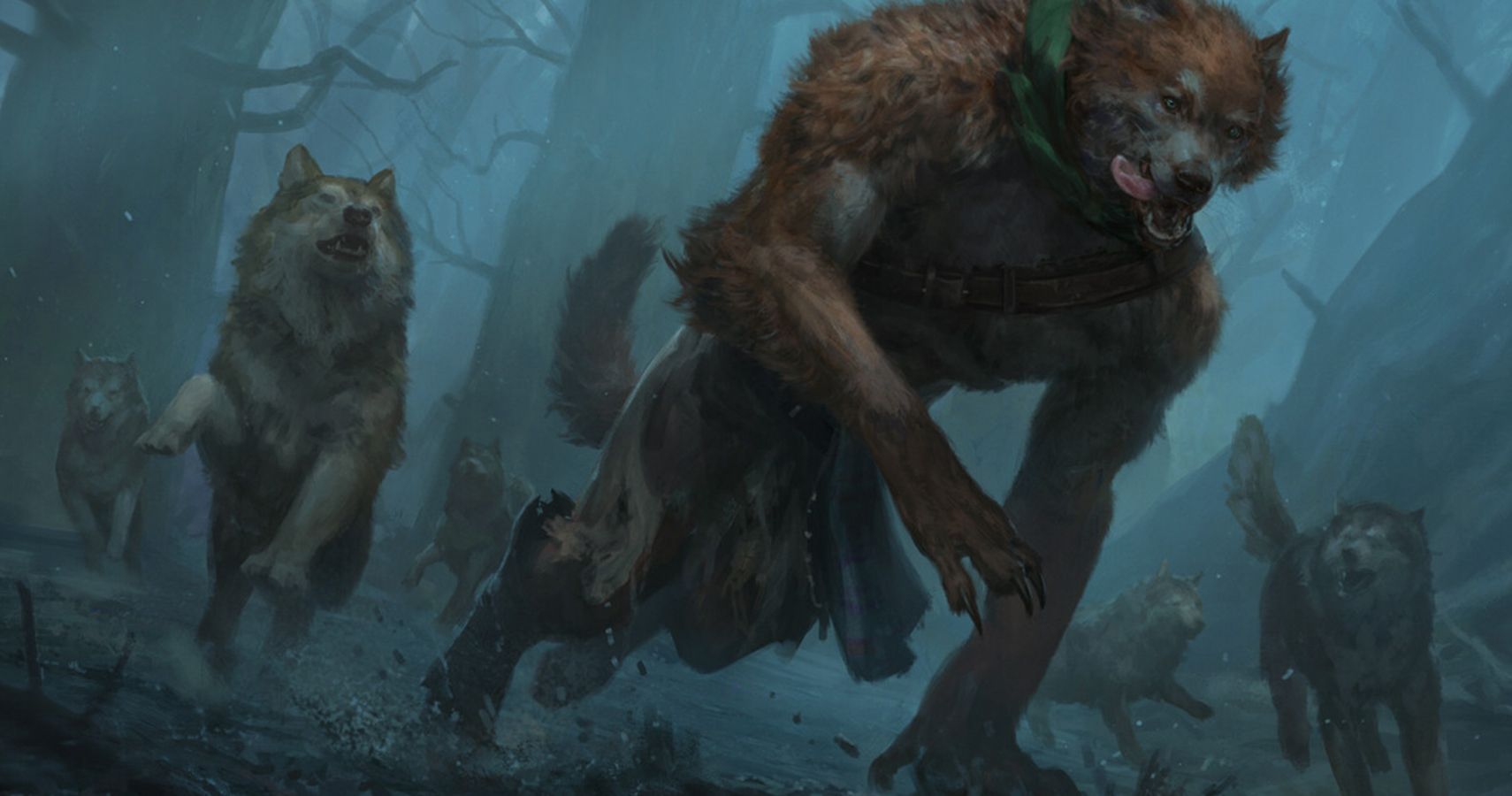Quick Links
In Magic The Gathering's Innistrad: Midnight Hunt set, there is something seriously wrong with the cycle of day and night. Days are getting shorter and shorter, while the nights are growing longer. For the humans of the plane, an endless night would mean a constant onslaught from the monsters of the world, but, for the werewolves who roam Innistrad's wilds and villages, it means a hunt that will never end.
This conflict makes for one of Magic the Gathering's most interesting (and complex) mechanics in recent sets. Here is everything you need to know about day, night, daybound, and nightbound.
Updated April 27, 2022 by Joe Parlock: Alchemy: Innistrad gave us another new daybound/nightbound transforming card, in the form of Rahilda, Wanted Cutthroat. Though a return to Innistrad hasn't been announced yet, it's likely we will see the mechanic return one day. The numbers in the count have been updated up to Alchemy: Innistrad.
What Are Daybound and Nightbound?
Day and night is a mechanic that augments the fan-favorite Innistrad staple of transforming cards. Transforming cards have two faces, with the card flipping over and 'transforming' whenever certain conditions are met.
In Midnight Hunt, a new condition for transforming cards has been introduced in the form of day and night. If it is day, all cards with daybound and nightbound transform to their daybound face. When it becomes night, they all transform into the nightbound face.
For example, when Fangblade Brigand enters the battlefield, as it is daybound, the game will become day. If something makes it night, it (and all other daybound permanents on any player's battlefield) will transform to its nightbound face, Fangblade Eviscerator.
Day and night are only introduced to the game when either a Daybound/Nightbound card enters the battlefield, or when another card explicitly makes it so, such as Vadrik, Astral Archmage's ability to make it day.
Before either of those things happen, it is considered neither night nor day. Once someone makes it day or night, the mechanic stays in play for the rest of the game.
There is another way to switch between the two. Once either day or night has been brought into the game, the number of spells a player casts on each turn could cause the change: if it's day and somebody doesn't cast any spells on their own turn, it becomes night at the start of the next turn.
If it's night, and somebody casts two or more spells on their own turn, it will become day at the start of the next turn instead. Unfortunately, this means you can't cast spells on other people's turns to force one state or the other, you must do it on your own turn.
How To Use Day and Night
What you want out of the day and night cycle depends on which creatures you are playing. Werewolves almost always prefer it to be night, where they transform into their much more powerful forms, while humans want to keep it daytime, when their opponents are at their weakest.
Because your opponents will likely want to play spells, it is much harder to keep it night than it is day. Fortunately, there are ways to force the change, such as The Celestus and Tovolar, Dire Overlord, who makes it night on your upkeep as long as you control three or more wolves or werewolves.
There are also some decks that don't care about what time of day it is, only that it keeps changing. Cards like Celestus Sanctifier, Sunrise Cavelier, and Vadrik all want the time of day to switch as much as possible.
What Colour Is Day and Night?
All mechanics are more closely tied to certain colors than others. That being said, Day and Night is an interesting case where different aspects of the mechanic are linked to different colors.
There are 36 transforming Daybound/Nightbound are primarily found in the Jund colors of black, green, and red. As of Alchemy: Innistrad, there are four black, 13 red, 13 green, four Gruul (red/green), one Boros (red/white), and one Simic (blue/green).
Interestingly, there are two cards that sit outside of these colors: Brutal Cathar is white when Daybound and red when Nightbound, while Suspicious Stowaway turns from blue to green.
On the other hand, cards that care about the switching of day and night tend to be found more frequently in the Jeskai colors of white, blue, and red. Blue and red have two cards each, while red has three. Boros (white and red) has one with Sunrise Cavelier, and Izzet (blue and red) has one in Vadrik, Astral Archmage. Crimson Vow didn't introduce any new cards that have this ability.




